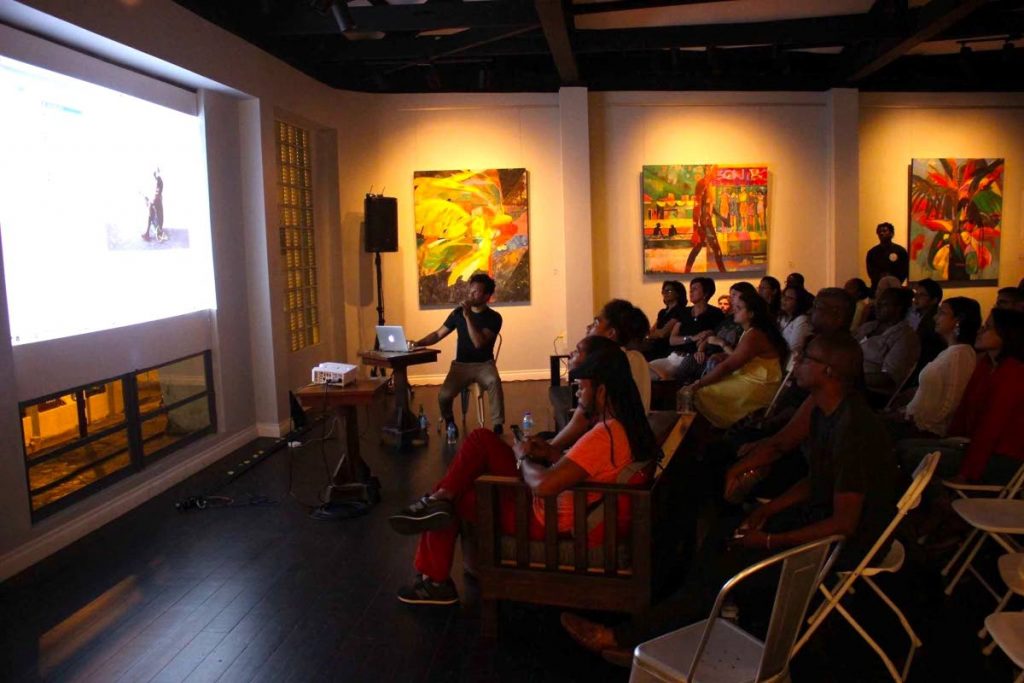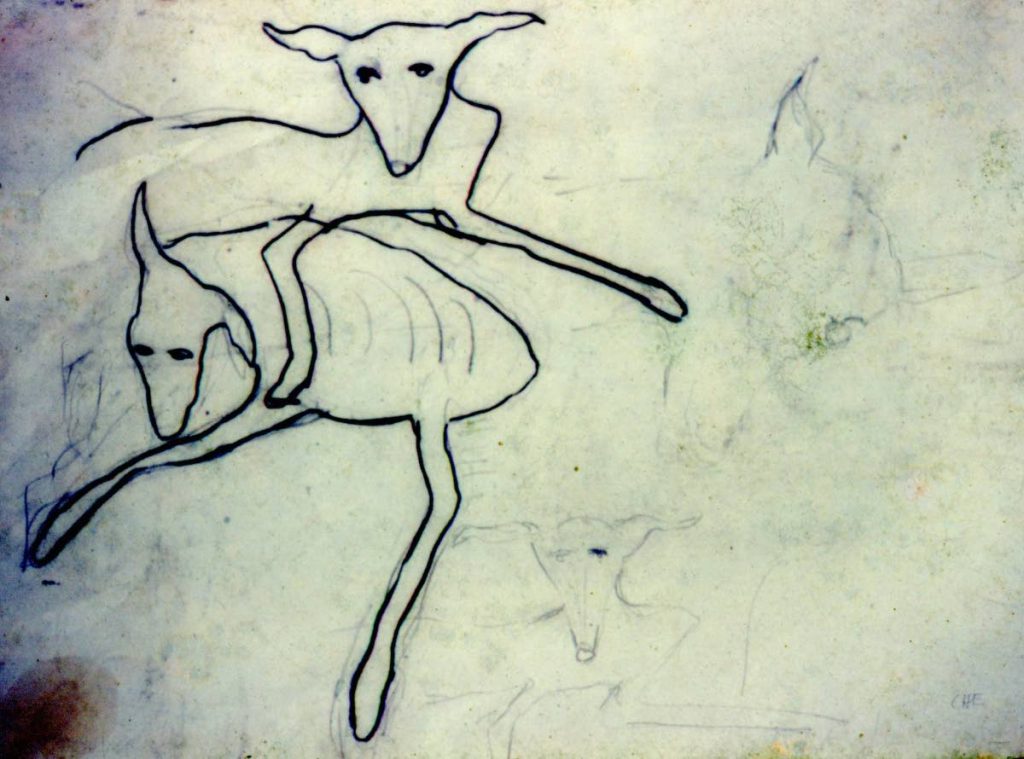Che Lovelace’s journey in art

ARTIST Che Lovelace took listeners through his journey in art, reaching the conclusion that the more you touched the painting the more of you go into it.
Those who attended Lovelace’s artist talk at the recently opened Loftt Gallery, Rosalino Street, Woodbrook on August 8, saw some of the over three decades of work Lovelace has produced and the changes in style and texture that accompanied different periods in his life.
The artist talk began at 7 pm and ended around 9.30 pm.
His recent work was the first to be shown at the newly-opened gallery and his talk was also the first in a series planned by the gallery. Lovelace shifted through digital folders of his work done over the decades.
Growing up in Matura and having attended Queen’s Royal College (QRC), it was only in third form that he “had his first memory of thinking he could do art.”
“I was never a person making drawings as a child,” he said.
While there, cherished Caribbean artist Jackie Hinkson, Lovelace’s teacher, “saw something” in his drawings. Lovelace did not go to sixth form but instead pursued art at L’Ecole Regionale d’arts Palstiques, Martinique.
One of his paintings appeared in a young artist exhibition in the late 80s, at Aquarela Gallerie run by Geoffery Maclean and Mark Pereira. It was then Lovelace realised he wanted to become an artist.
So it was only fitting then that he began the artist talk with his experiences in Martinique. He started with his work done in Martinique in 1991. Some of his early work stemmed from seeing a female dog die while at his student’s lodge. This resulted in a sketch which “launched a whole creative process.”

The 1992 sketch was called Study of a Dog. He made “lots of paintings over that year” and considers the work from this as his “first real body of work.”
He has worked as an artist since he graduated in 1993. “Art is not always about technique, it is about spirit,” Lovelace said, highlighting that he was never a particularly good draughtsman. He found that as an artist he also chose “difficult paths to explore. In terms of kind of getting to the next level and just growing and evolving.”
Lovelace walked the full audience through the seven transitionary stages of his life as an artist, sharing with them some of the things he earned and experienced through these phases.
One of them being, “I always feel art gives life to supposedly lifeless things. That is sometimes the most critical thing to do.”
The audience learned that while he likes working with dancing bodies, it was nice to come back to things that are inanimate and simple which reflects “your quiet thinking and sense of construction.”
While his periods saw a change in different styles and use of materials, his subject matter has been constant. Lovelace has explored dancing figures, dancehall, Carnival.
Constantly challenging himself Lovelace said he tries “for complexity of surface...a voyage through different things.”
“I started putting these types of composite images together almost like a collage. A little bit of newspaper stuff, candle wax...this would be painted, that would be sewn on...this is very telling because that kind of composite is still in my work,” he said.
At some point, Lovelace experimented with different materials like plastic, “challenging what he was doing before in a way. I think it is important to do that.”
When he came back to Trinidad in 1993, he spent a couple of years “not really making anything.”
He did not make anything of consequence until 1995, he told the audience. He then worked with artist Eddie Bowen when he came back to TT. “I was always someone who sought out other artists....many of them older as part of my education if you will. As part of the way of learning things and getting a footing.”
In his second transitionary period while working with Bowen, Lovelace was painting but was not truly satisfied with the paintings and so “began cutting them up” after two years.
“And I began taking them off the stretchers...at that moment something really interesting started to happen... All of a sudden I started to sew everything back together. So after I took it apart, I sewed it back together which was a slow process
“I was always impulsive, doing fast paintings, very energetic, very gestural. And here was this process where I had to really just slow down and just sew something.
“This became a very big body of work. I would say it is the first body of work that got noticed by curators and people who write about art, and the people here who were making art.”
Lovelace took the audience through the different blocks of his work showing and describing the process, from 1991 to 2018.
When asked by a member of the audience if he would do prints of his work, Lovelace said, “I remember from a rural context a lot of people having these little prints,” of the work of artists from the 1940s and 50s. “They became very strong memories for me of art in people’s homes and I feel if I did a series of prints, I would feel happy to join in that tradition.”


Comments
"Che Lovelace’s journey in art"